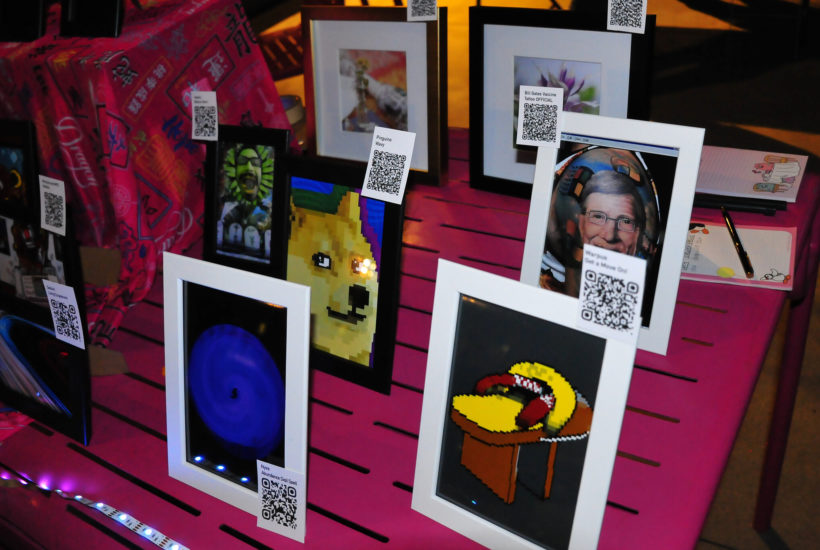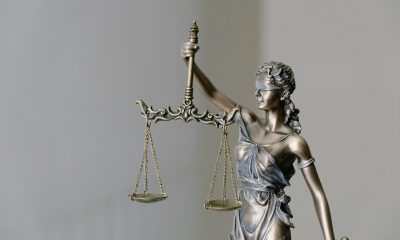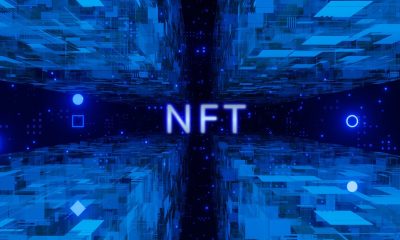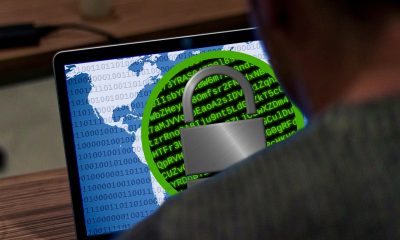Crypto
Piracy Is a Problem for NFTs, but the Industry Continues to Grow
Data from DappRadar shows that the NFT market saw $25 billion in trading volume last year. That’s an incredible increase compared to 2020 figures when sales were just $94.9 million. With piracy concerns on the rise, it’s obvious that NFT marketplaces are not doing enough to protect copyright holders. They have so far failed to develop systems to cross-check content listed by users.

Non-fungible tokens (NFTs) continue to gain traction in the digital world. They proved to be a profitable investment for many. But also as a way to help artists monetize their work. As the NFTs industry continued to grow, however, content creators faced a very different challenge. A new wave of piracy broke out, with no easy solution. Because NFTs are entirely digital, it has become easier to steal art and sell it for large sums of money.
San Antonio-based painter Aja Trier talks about her struggle to stop her work from being stolen. She has been selling different versions of Vincent van Gogh’s “Starry Night” on mugs, mousepads, and pillows for years. Trier pointed out that during the same period, she caught and stopped several people selling pirated copies of her art on online marketplaces like Amazon.
However, with the advent of NFTs, the number of pirated copies of her works increased tremendously. Trier pointed to the case of an unidentified OpenSea user who posted tens of thousands of listings of copied versions of her works for sale on the marketplace last week. She recalls that 37 NFTs were sold before she was able to convince OpenSea to take the remaining pieces off the market.
“Someone just took them and repurposed them as NFTs. That is so shameless. And if it happens to me, it can happen to anyone.”
Read more about the NFTs industry and find the latest news in the crypto world with our companion app. The Born2Invest mobile app keeps its readers up to date with the most important financial news of the day.
The NFTs industry grew too fast and overtook the development of marketplaces
While Trier’s experience may seem like an isolated case, she is far from the only artist to find fault with NFTs. RJ Palmer is a San Francisco artist who designs monsters and fantastical creatures. He said he has since given up sending requests to NFT marketplaces. Stealing his works has simply become a daily routine.
Initially, he sent emails asking marketplaces to remove the NFTs. But when the problem kept repeating itself, he got tired. It seems there are more than a few who sell an NFT in such an easy way and then withdraw the proceeds as Ether coins. Palmer said that sending out the requests eventually took him way too much time. He just doesn’t want to deal with this issue anymore.
Meanwhile, data from DappRadar shows that the NFT market saw $25 billion in trading volume last year. That’s an incredible increase compared to 2020 figures when sales were just $94.9 million. With piracy concerns on the rise, it’s obvious that NFT marketplaces are not doing enough to protect copyright holders. They have so far failed to develop systems to cross-check content listed by users.
To address the problem of piracy, leading digital art platform DeviantArt has stepped up its efforts to prevent art theft. The platform has started using AI algorithms to automatically find pirated content. Users are then alerted when someone posts a copy of their artwork as NFTs. According to reports, DeviantArt has sent out thousands of alerts since September last year.
__
(Featured Image by pinguino k CC BY 2.0 via Flickr)
DISCLAIMER: This article was written by a third party contributor and does not reflect the opinion of Born2Invest, its management, staff or its associates. Please review our disclaimer for more information.
This article may include forward-looking statements. These forward-looking statements generally are identified by the words “believe,” “project,” “estimate,” “become,” “plan,” “will,” and similar expressions. These forward-looking statements involve known and unknown risks as well as uncertainties, including those discussed in the following cautionary statements and elsewhere in this article and on this site. Although the Company may believe that its expectations are based on reasonable assumptions, the actual results that the Company may achieve may differ materially from any forward-looking statements, which reflect the opinions of the management of the Company only as of the date hereof. Additionally, please make sure to read these important disclosures.
First published in CRYPTO MONDAY, a third-party contributor translated and adapted the article from the original. In case of discrepancy, the original will prevail.
Although we made reasonable efforts to provide accurate translations, some parts may be incorrect. Born2Invest assumes no responsibility for errors, omissions or ambiguities in the translations provided on this website. Any person or entity relying on translated content does so at their own risk. Born2Invest is not responsible for losses caused by such reliance on the accuracy or reliability of translated information. If you wish to report an error or inaccuracy in the translation, we encourage you to contact us.

-

 Business2 weeks ago
Business2 weeks agoLegal Process for Dividing Real Estate Inheritance
-

 Fintech12 hours ago
Fintech12 hours agoJPMorgan’s Data Fees Shake Fintech: PayPal Takes a Hit
-

 Fintech1 week ago
Fintech1 week agoPUMP ICO Raises Eyebrows: Cash Grab or Meme Coin Meltdown?
-

 Africa3 days ago
Africa3 days agoSurging Expenditures Widen Morocco’s Budget Deficit Despite Revenue Growth
























